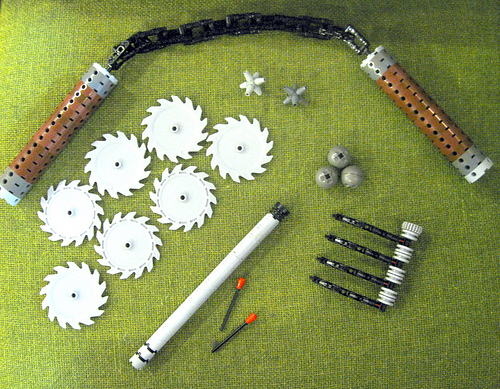This samurai is astounding. The plethora of unusual pieces meshes perfectly together. Genius, I say. Pure Genius. You can color me a fan of the builder. His name is Cameron, by the way.

And, yes, this is the type of thing we would love to see in the Big In Japan layout at BrickCon this year.
Thanks to Bruce for pointing this out to me.
The Brothers Brick is funded by our readers and the community. Articles may include affiliate links, and when you purchase products from those links, TBB may earn a commission that helps support the site.










